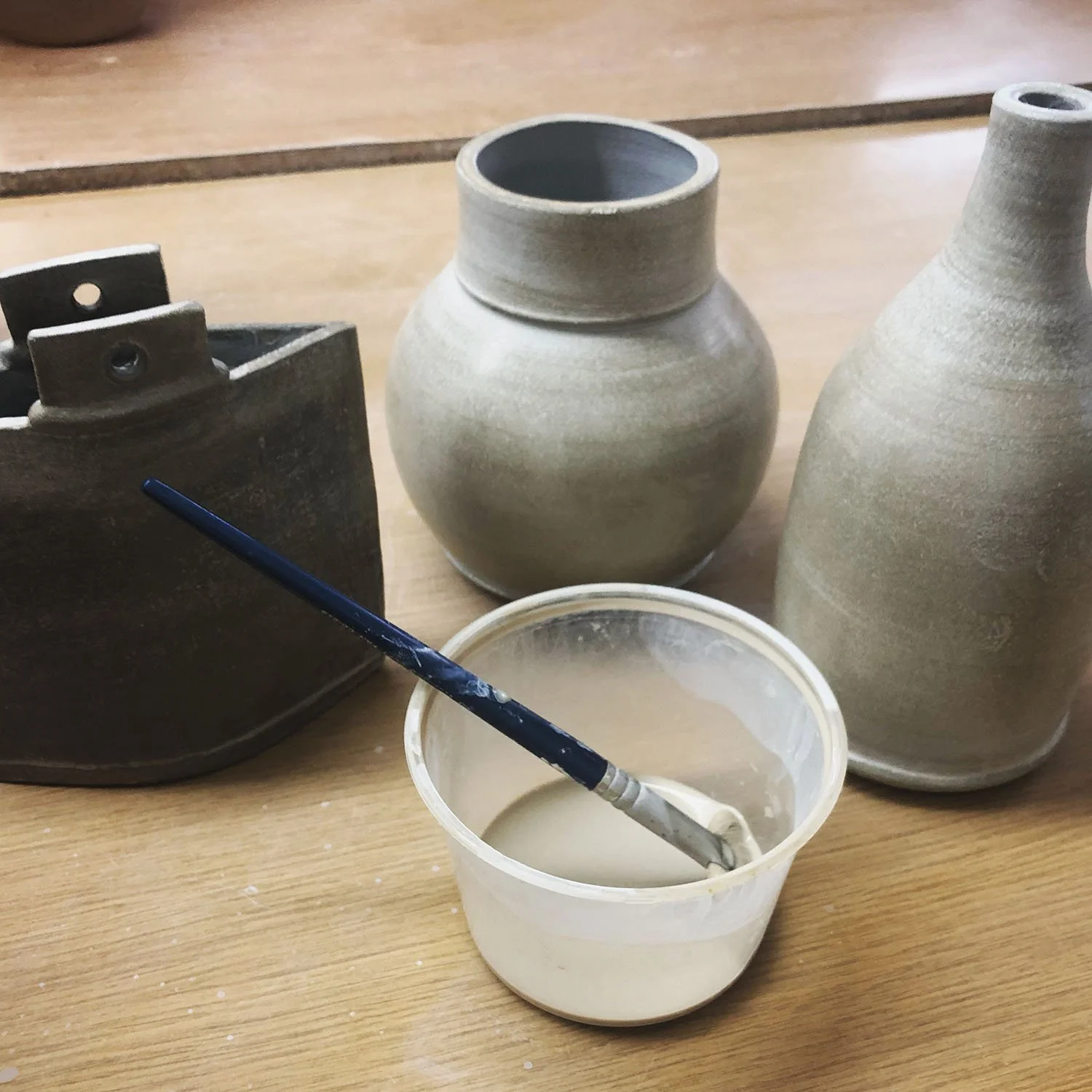What’s the difference between Raku and Naked Raku?
Raku and naked raku are two distinct ceramic alternative firing techniques that produce unique and beautiful results. Let's explore the differences between the two:
L: Example of raku (shiny) R: Example of naked raku (satin sheen)
Raku Firing
Raku is a traditional Japanese firing technique that dates back to the 16th century. It involves removing pottery from the kiln while it is still glowing hot, typically at around 1800°F (982°C), and placing it into a container with combustible materials like sawdust, dried alfalfa, and paper. This rapid cooling process causes thermal shock and creates crackled glaze effects and a range of unique colors and patterns on the pottery's surface. Raku firing is known for its unpredictability, and each piece is one-of-a-kind.
The process of Raku firing usually involves the following steps:
Raku pieces have a shiny surface where I used glaze - white crackle, oil slick, and yellow.
The pottery is bisque fired first to prepare it for the glazing process.
Glazes with high amounts of frit* and low alumina* content are often used for Raku, as they melt quickly. You can purchase ready-to-use bottles of Raku glazes or prepare them yourself. *Frit is a ceramic glass that has been premixed from raw powdered minerals, melted, cooled and ground into a fine powder. *Alumina stiffens the glaze so it doesn’t slide off the clay.
Once the glaze is applied, the pottery is fired rapidly to temperature.
The hot pottery is then removed from the kiln and placed in a reduction chamber (a metal container with combustible materials and a lid) to cool quickly.
Example of a naked raku sculptural ceramic piece.
Naked Raku Firing
Naked raku is a variation of the Raku technique. While it shares some similarities with Raku, there are notable differences in the glazing process. In naked raku, the pottery is usually burnished or coated with a fine clay slip before being glazed. The glaze used in naked raku typically contains a high percentage of organic material, like sodium silicate.
Photos from my last naked raku firing.
The firing process for Naked Raku:
The burnished or slip-coated pottery is bisque fired.
A special glaze containing organic materials is applied to the bisque-fired pottery.
The pottery is fired again, usually in a Raku kiln or a similar environment.
Once the glaze has matured, the pottery is removed from the kiln while still hot.
While the pottery cools down, the glaze contracts and cracks, and the clay slip or burnished layer also contracts, causing it to peel off, revealing the unglazed “naked” clay body beneath (So very satisfyig!) This creates unique crackled patterns with an exposed clay surface.
My slip-coated ceramic pieces are prepped for bisque firing.
In summary, both Raku and naked raku are firing techniques known for their unpredictability and ability to produce visually striking surfaces. However, the key difference lies in the glazing process: Raku involves applying glaze directly to the bisque-fired pottery, while naked raku involves using a clay slip or burnished surface and a specialized glaze with organic materials to achieve its distinctive results.
What is the difference in the finished pieces?
Raku pieces have a shiny finish where glaze was applied and naked raku has a “naked”, satin sheen finish. For both techniques, unglazed areas on a ceramic piece will turn to a raw, dark gray or black from the smoke firing.
Shop available Raku pieces here.




